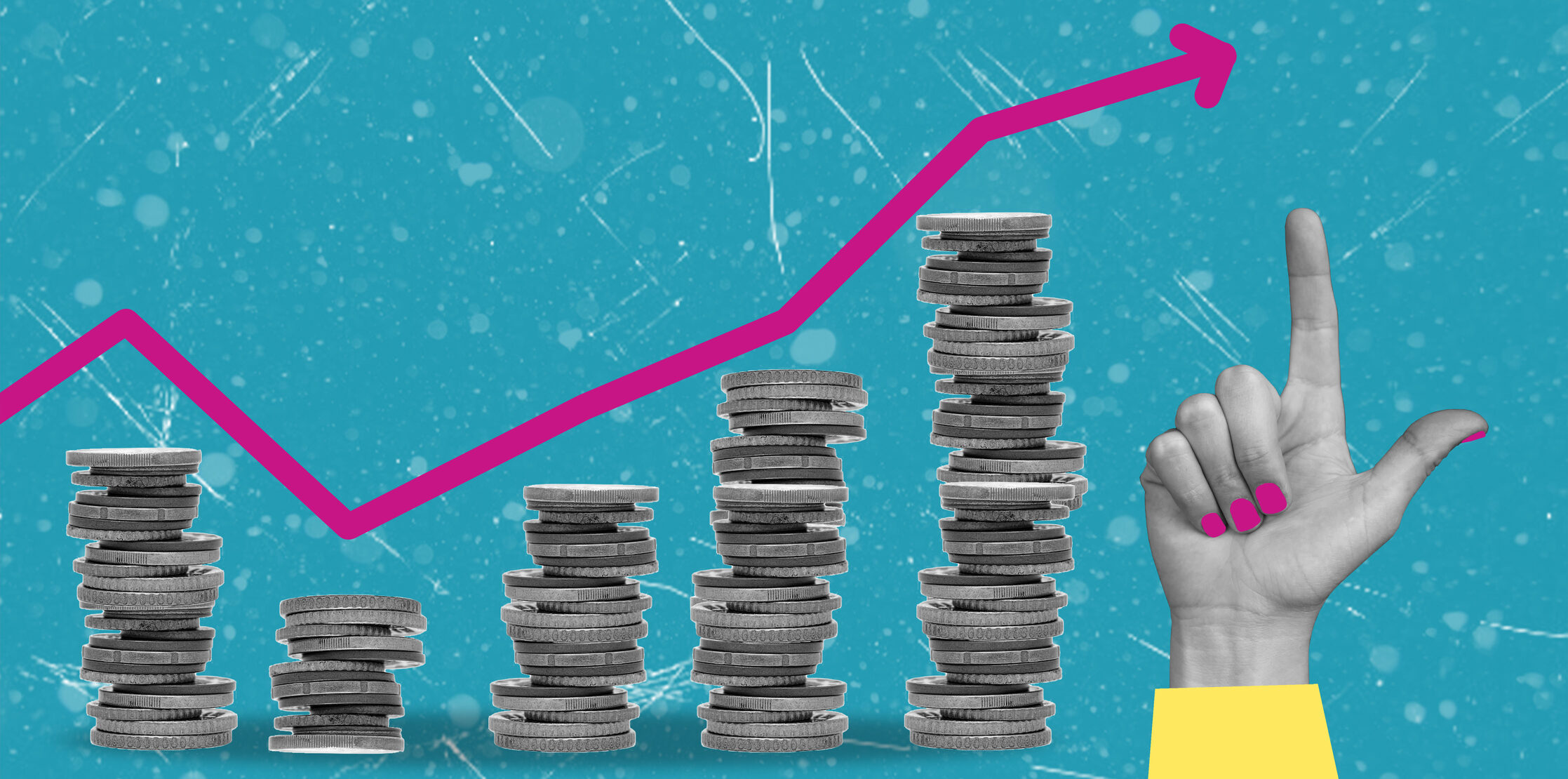A well-crafted website should no longer be seen as a “nice addition to your branding”—it’s a necessary digital marketing tool that should target the right people and prioritise conversion through the sale of a product or the scheduling of a service, with the bonus of establishing customer loyalty and return business. For companies that already have a website and value data-driven decisions, the crucial question arises: How do we measure our website’s return on investment (ROI)?
This guide explores how to measure it effectively and what strategies you should use to maximise the value of your website.
What is Website ROI?
Essentially, it’s a metric that gauges your website’s financial performance. It analyses the profit generated compared to the investment needed for the website’s design, development, maintenance, and marketing efforts.
There is another essential factor to remember: Website ROI goes beyond how much profit it generates. Instead, it considers the cost of creating and running the site against the benefits it brings to your business.
A well-designed site is not just about aesthetics. It’s a powerful tool that can create brand awareness, generate leads, and build customer relationships. These benefits, though not directly reflective of sales figures, can significantly contribute to a business’s bottom line.
Marketing Strategies
A robust marketing strategy is important for boosting your website’s ROI. Your site’s value encompasses many factors, and a positive ROI proves that your website is actively contributing to your brand’s goals.
How to Calculate ROI
A simple formula helps estimate ROI…
ROI = (Profit from the website – Investment cost) / Investment cost.
The investment cost includes website creation, redesign, and ongoing maintenance. Profit refers to the net gain generated through your website.
Expressing ROI for Clarity
Website ROI is often displayed as a percentage to make it easy to understand and analyse progress over time. If needed, use charts and graphs to help visualise this better.
Challenges in Measuring ROI
Determining the accuracy of ROI can be challenging. While calculating investment costs is easy, measuring a website’s value can be complex.
Here’s why…
- Multifaceted Benefits: Websites serve various purposes, from lead capture to brand storytelling. Quantifying the value of brand awareness can be challenging.
- Indirect Conversions: A website visitor might not convert immediately but could become a customer later through offline interactions. Attributing credit solely to the website can be complex.
- Data Attribution Challenges: Traffic can come from multiple sources, making isolating the website’s specific contribution to conversions difficult.
Why Website ROI Matters
Website ROI goes beyond vanity metrics like traffic numbers.
Understanding your website ROI allows you to…
- Justify Investment Decisions: Quantifiable ROI data can help guide you in making informed decisions about marketing strategies and website development. When presented with ROI statistics, the right resources can be allocated to the campaigns or initiatives that will deliver the highest potential return.
- Improve Website Performance: Monitoring ROI can help businesses gain valuable insights into the effectiveness of their website and user behaviour. This data allows you to optimise your website to maximise conversion and engagement by refining content, streamlining user experience (UX), and making sound design choices.
- Identify Areas for Improvement: Analysing ROI will flag parts of your site that are underperforming. This could be anything from a poorly designed checkout process to irrelevant content. By highlighting these weaknesses, you can address them strategically and enhance your site’s overall performance.
5 Strategies to Measure ROI
1. Define Your Goals
The first step is to identify your website’s primary objectives.
Are you…
- Aiming for increased sales?
- Increased lead generation?
- Boost brand awareness?
- A combination of the above?
Clearly defined goals will guide your website optimisation efforts and ROI measurement process.
2. Identify Key Performance Indicators (KPIs)
Here are some key website KPIs to track and align with your goals…
- E-commerce: Conversion rate, average order value, customer lifetime value.
- Lead Generation: Number of leads generated, cost per lead, lead quality.
- Brand Awareness: Website traffic, brand mentions on social media, brand search volume.
- Traffic Acquisition: Understanding how visitors find your website (organic search, social media, referrals) helps optimise marketing efforts and target the right audience.
- Engagement Metrics: Time spent on site, bounce rate, and page views provide valuable insights into user experience and content effectiveness.
- Conversions: This encompasses actions you deem valuable, such as online purchases, newsletter signups, or contact form submissions.
3. Analytics
Google Analytics helps you gain insights into user behaviour and your website’s performance. Platforms like these highlight data on traffic sources, user demographics, page visits, and conversion rates, which empowers you to optimise your website for maximum impact.
Here are a few more helpful tools to try…
- Mixpanel is a user-centric tool that excels at tracking user behaviour. It’s a top choice for businesses prioritising user experience (UX) strategies.
- Kissmetrics is similar to Mixpanel, but it’s also designed to help you track the ROI of your marketing campaigns. It’s also an excellent option for businesses wanting to understand how their marketing efforts impact their bottom line.
- Adobe Analytics offers many features, including reporting, data visualisation, and segmentation. It is ideal for businesses that need a comprehensive web analytics solution.
- Matomo is an open-source web analytics platform that gives you complete control over your data and is perfect for businesses concerned about data privacy.
4. Monitoring and Insights
KPIs and analytics provide a framework to define, assess, and refine your strategies for success.
Here are a few essential factors to include and how to calculate them correctly…
Bounce Rate
Bounce rate is the percentage of online users that leave your site after only landing on the first page. A low bounce rate is a positive sign, meaning your website grabs visitors’ attention and possibly converts them into leads.
On the other hand, a high bounce rate signals that there may be some issues. This could be that your website is not responsive (doesn’t work well on phones, tablets, etc.), has slow load speed, poor navigation, outdated content, or is not functional.
Regularly monitoring bounce rates provides valuable insights into areas of your website that need improvement, helping you enhance user engagement and lead conversion.
Here’s the math behind bounce rate…
Bounce rate = (Number of visits with only one page viewed) / (Total number of visits to the site)
Website Traffic
Website traffic measurement is a crucial tool for gauging your online presence. It tracks the number of visitors you attract and allows you to monitor their journey through your website. This valuable data provides insights into optimising your sales funnel and conversion rates.
Here’s the math behind website traffic…
Monthly traffic = (Total of Visitors/Total Months)
Conversion Rates
Your website’s conversion rate tracks the number of visitors who take a preferred action, effectively becoming leads or sales. It’s an essential metric for monitoring website performance.
What counts as a conversion depends on your website’s goals. For online stores, it’s typically the number of sales. For other sites, conversions might be email signups, content downloads, or registrations.
Here’s the math behind conversion rates…
Conversion Rate = Monthly Conversions / Monthly Visitors
Closing Ratio
The closing ratio is a fundamental measurement of sales. In short, it tells you the percentage of potential customers you turn into paying ones. This comparison between the sales you close against the leads you generate implies that the higher these ratios, the more sales and revenue you have for your business.
The closing ratio isn’t solely about sales numbers. It reveals just how well your website is performing in driving sales. While high ratios are what any company hopes to see, a low ratio indicates that your website needs some more optimisation to be more effective.
Here’s the math behind closing ratio…
Closing Ratio = (Closed Deals) / (Total Sales Leads) x 100
5. The Impact of SEO
Search engine optimisation (SEO) is another way to get a higher return on investment. The better your site ranks in search engine results pages (SERPs), the more traffic and potential customers you’ll attract.
Look at your website ranking to understand your online visibility and whether it is geared toward targeting the right audience.
Tip: Regularly update and optimise your content (adding alt tags to images, title tags, meta descriptions, and clear URL structures) with keywords to maintain a healthy search ranking. Alternatively, conduct an SEO website audit. This will provide you with a strategic blueprint of what areas of your site need to be refined and help you climb search rankings.
How Do I Check My Website Page Ranking?
Use the following tools…
How to Improve Website ROI?
A high-performing website isn’t built overnight; it needs ongoing optimisation based on data and strategic adjustments.
Here are some key strategies…
- Enhance User Experience: A user-friendly website with intuitive navigation and clear calls to action keeps visitors engaged and guides them towards conversion.
- Focus on Content: High-quality, informative content that resonates with your target audience establishes your brand as a thought leader and facilitates trust, leading to conversions.
- Invest in SEO: A well-optimised website ranks higher in search engine results pages, organically attracting more qualified traffic.
- Include Call to Action: Use CTAs on your website to clearly tell visitors what you want them to do next. For example, including a CTA button on your post-purchase page can boost social media sharing of customer purchases by 16 times [HubSpot].
- Think Responsive Design: Creating a user-friendly mobile site can boost engagement – 79% of people are more likely to return or share it if it’s easy to use [Think with Google].
- Stay Informed: Keep yourself updated on the latest website design trends and digital marketing strategies to improve your website’s effectiveness.
Tired of Guessing? Get Measurable Results with Your Website
In today’s data-driven world, every marketing decision needs a solid foundation. But when it comes to your website, are you just guessing at its effectiveness? Stop throwing money at a website that might not be working for you.
If you’re ready to take your website to the next level, contact Mantis Digital today!
Have An Idea? Let's Build And Scale It!








